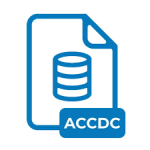.DBV File Extension

Database Variable Field File
| Developer | N/A |
| Popularity | |
| Category | Database Files |
| Format | .DBV |
| Cross Platform | Update Soon |
What is an DBV file?
.DBV files are primarily used to store variable field data within a database system. These files can hold diverse types of information, such as text, numbers, dates, or other data formats, allowing for flexible data management.
More Information.
.DBV files have been used historically as part of database systems to manage variable data fields within structured datasets. They were created to enable more flexible storage and retrieval of data in databases.
Origin Of This File.
.DBV files are commonly generated and used within database management systems to store and retrieve variable data efficiently.
File Structure Technical Specification.
.DBV files typically store data in a structured format, with each field having a variable length. The exact structure and technical specifications may vary depending on the database system and the specific implementation.
How to Convert the File?
Windows:
- Use database management software like Microsoft Access, SQL Server Management Studio, or MySQL Workbench.
- Import the .DBV file into your chosen database management software.
- Export or save the data in the desired format, such as CSV, Excel, or another database format.
Linux:
- Install and use database management tools like MySQL, PostgreSQL, or SQLite.
- Import the .DBV file into your chosen database management tool.
- Export the data into a format compatible with your requirements, such as CSV, JSON, or another database format.
Mac:
- Utilize database management applications like TablePlus, Sequel Pro, or DBeaver.
- Import the .DBV file into your chosen database management application.
- Convert or export the data into the desired format, such as CSV, Excel, or another database format.
Android:
- Install a database management app from the Google Play Store, such as SQLite Database Editor or DB Browser for SQLite.
- Import the .DBV file into the database management app.
- Export the data into a compatible format, such as CSV, JSON, or SQLite.
iOS:
- Download and install a database management app from the App Store, such as SQLiteFlow or SQLPro for SQLite.
- Import the .DBV file into the database management app.
- Convert or export the data into a format suitable for your needs, such as CSV, JSON, or SQLite.
Others:
- For other platforms or scenarios, you may need to rely on database management software that supports .DBV files or utilize custom scripts or converters tailored to your requirements.
- Develop or use third-party tools capable of converting .DBV files into formats compatible with your target environment.
- Explore options specific to your needs, such as database migration services or custom software development, if necessary.
Advantages And Disadvantages.
Advantages of .DBV files include their ability to handle variable data efficiently, allowing for more flexible data management within databases. However, they may have limitations in terms of compatibility with different database systems and software applications.
How to Open DBV?
Open In Windows
.DBV files can be opened in Windows using compatible database management software or by importing them into database applications that support this file format.
Open In Linux
Similarly, in Linux, .DBV files can be accessed using database management tools compatible with the Linux operating system.
Open In MAC
On macOS, .DBV files can be opened using database management software or by importing them into compatible applications.
Open In Android
.DBV files may be accessed on Android devices using database management apps available on the Google Play Store, provided they support this file format.
Open In IOS
On iOS devices, .DBV files can be opened using compatible database management apps available on the App Store.
Open in Others
For other platforms or specialized software environments, .DBV files can typically be accessed using database management tools that support this file format or by converting them to a more widely supported format for further processing or analysis.













